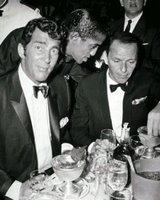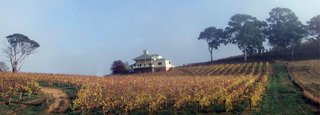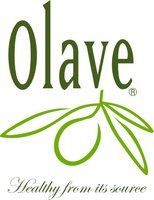 The Bartender Diaries
The Bartender DiariesMike Hill - Lounge Manager, Topaz and Bar Rouge, Washington DC
“I hate the term ‘frou frou,’” declares Mike Hill as we relax on plush velvet banquets. I have just made the “faux pas” of referring to the delectable lavender-infused cocktail he has presented to me to sample, as such.
“We do research on what’s in season and pull together ideas. We call them ‘fruit infusions.’ Then, we pick recognizable names, and hope people enjoy them.”
From my perspective, “enjoy them” is an understatement. The cocktails presented in Kimpton lounges are consistently creative in name, composition and presentation. In fact, they are reflective of the growing hotel chain, itself.
Headquartered in San Francisco, the boutique hotel company slogan is: “Every hotel tells a story,” and each property has its own individual personality. So much so, that a visitor to the Villa Florence in San Fran, may not realize it is related to Hotel Allegro in Chicago, or 70 Park Avenue in New York, or Hotel Monaco in DC. At least, not at first glance.
The DC-area has six Kimpton properties, with two more underway. The hip lounges at Topaz and Rouge, under Mike’s care and supervision, attract the stylish ‘sipsters’ of Washington.
Their recipe for success? “We get a lot of support from corporate headquarters, with marketing ideas, etc. We have local support, too. Sarah Crocker (PR Director for Kimpton Hotels and Lounges in Washington) always brings us opportunities.”
Mike Hill was born in Philadelphia, and grew up in South Jersey. Upon completing his undergrad in Business Management, he moved to DC to pursue an MBA, from Howard University.
While studying business, he also honed his bar skills. “I bartended through undergrad at Maxine’s, in Trenton, a Mom and Pop place with soul food and ‘old school’ martinis, no frills.”
His first introduction to Kimpton, in the fall of 2003, was after returning from a summer internship, at Bloomberg. He took a server position at Firefly, in the Hotel Madera.
A year later, Marriott offered Mike a job as Restaurant Manager in Montgomery County, MD. He agreed, but by May 2005, Firefly wooed him back with an Assistant Manager position. Mike jumped at it saying, “I missed it too much!”
Hill says that what he likes most about Kimpton is that it doesn’t feel like a corporation. “Everyone I work with cares about what they’re doing. The loyalty runs high and we treat each other with respect.”
In November 2005, he accepted his current position of Area Lounge Manager. It can be challenging to run two lounges because he can’t be at both places, at same time. “Some nights I have to pick who needs me most, at a particular moment.”
But, he thrives on it, and especially values the interaction with his staff. “I love the people I work with. They fit the personalities of the lounges.”
Topaz features a laid back, relaxed ambiance. The hotel’s theme is wellness. He says, “The lounge has an Urban-Asian identity. We even have a Greek organic wine and an organic cocktail called “Organic White Cosmo” (drink recipe to follow in Topaz posting, next week!)
Rouge has been labeled a ‘Conversation Bar’ which means its quiet enough to bring a date, and actually talk. Later in the evening, though, according to Mike, “It becomes a party atmosphere.”
He also gets to use his business degrees. “I’m responsible for running numbers and creating marketing plans.”
What people may not know about Mike, because he is too modest to boast, is that in his younger years, he traveled all over the country playing tennis on the National Junior Circuit, and won the National Championship, at age 12.
When prodded, he explains, “Tennis helped get me into college. I started playing at 5 years old. I thought about being a pro until I turned 15. Then, my main interest was just being a normal kid.”
He still picks up a racket, from time to time. “I love the sport. I play whenever I can.”
Mike is also passionate about the culinary world. “I like discovering food, wine and drinks. I’ve picked up things being around great chefs and mixologists. I love that I can learn something new. In this business, I think that’s always going to happen.”
The future is bright for a rising star, like Mike. He’s got the people skills, business savvy and enthusiastic dedication to move up the rungs of any business corporation. Just remember not to call his fanciful, fruity cocktails “frou frou.” He hates that.
The Liquid Muse wants to know:
*Where do you like to go for a night out?
Somewhere low key, preferably with live jazz. I like Utopia. And, I still like to hang out at Firefly.
*What do you drink on a night off?
Captain & Ginger
*Where would you go on a special date?
If I were really going to splurge, I’d like to try Citronelle, or Restaurant Eve.






















